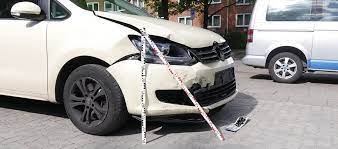
In the unfortunate event of a car accident, kfz gutachter kaltenkirchen one of the primary concerns for vehicle owners is assessing the extent of damage incurred. Properly evaluating car damage is crucial for insurance claims, repair decisions, and ensuring roadworthiness. This guide aims to provide comprehensive insights into car damage assessment, empowering vehicle owners with the knowledge needed to navigate through this challenging situation with confidence.
Understanding Types of Damage: Car damage can manifest in various forms, ranging from minor scratches to severe structural deformations. It’s essential to categorize damage types accurately to determine the necessary course of action. Common types of damage include:
- External Damage: This includes visible dents, scratches, and paint damage on the exterior surfaces of the vehicle.
- Structural Damage: Structural damage affects the integrity of the vehicle’s frame or chassis, potentially compromising safety.
- Mechanical Damage: Damage to mechanical components such as the engine, transmission, or suspension system can impact the vehicle’s performance and safety.
- Electrical Damage: Issues with the vehicle’s electrical systems, including malfunctioning lights, sensors, or infotainment systems, fall under this category.
Assessment Process:
- Initial Inspection: After an accident, conduct a thorough visual inspection of the vehicle to identify any visible damage. Check for dents, scratches, misaligned panels, and fluid leaks.
- Documentation: Document the damage by taking photographs from multiple angles. Note down relevant details such as location, extent, and any visible structural deformations.
- Consultation: Seek professional assessment from certified mechanics or auto body shops. They can provide detailed insights into the extent of damage and the required repairs.
- Insurance Evaluation: Contact your insurance provider and provide them with the documented evidence of the damage. They may send an adjuster to assess the damage and determine coverage.
Factors Influencing Assessment: Several factors can influence the assessment of car damage, including:
- Age and mileage of the vehicle
- Pre-existing damage
- Vehicle make and model
- Severity of the accident
- Quality of repair facilities
Repair Options: Based on the assessment, vehicle owners can choose from various repair options:
- DIY Repairs: Minor damages such as scratches or small dents can often be repaired at home using DIY kits.
- Professional Repair: For moderate to severe damage, it’s advisable to seek professional repair services from certified technicians or auto body shops.
- Total Loss Evaluation: In cases of extensive damage where repair costs exceed the vehicle’s value, insurers may deem the vehicle a total loss.
Conclusion: Car damage assessment is a critical process that requires careful attention and consideration. By understanding the types of damage, following a systematic assessment process, and exploring available repair options, vehicle owners can effectively manage post-accident situations and ensure their vehicles are restored to optimal condition. Remember, safety should always be the top priority, so never hesitate to seek professional assistance when needed.

Leave a Reply